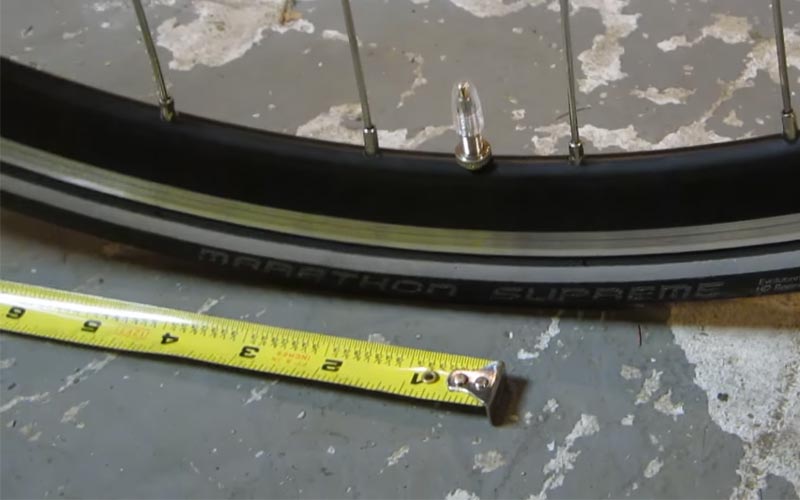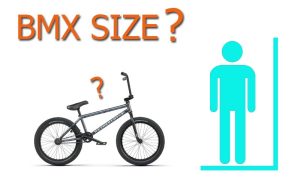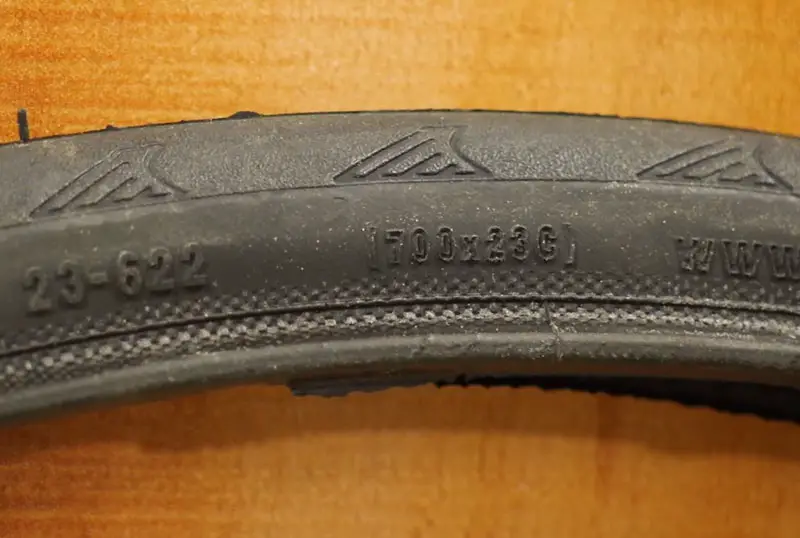
Knowing how to read bike tires is important because, in one way or another, you will need to replace your bike tires sooner – especially if you use the bike regularly. However, with the many different sizing standards out there – how exactly do you read bike tire sizes?
If you are confused about all the numbers you see on the bike tire sidewall, you’re in luck – we wrote a guide just for you. These numbers aren’t just random – they are bike sizes that you need to learn about so you’ll know what size to get in case your bike tire decides that it can’t be used properly anymore.
See also:
Contents
4 Steps to Read Bike Tire Size
Here are the basics on how to read a bike tire size:
Know the differences between using millimeters and inches
Some bike types use millimeters while others use inches. For instance, a road bike will typically indicate 700C, which is 700 millimeters or roughly 27.6 inches. On the other hand, a mountain bike (MTB) tire will use inches, such as 27.5 inches.
Therefore, don’t be overwhelmed if you see tires that have 650 or 700C written on them – those have a different purpose and type of bike.
Understand how to read standard sizing
Standard sizing is typically printed on your tire sidewall and you might be confused about what the numbers mean. Let’s look at an example: 700C x 23, which is common for a road bike. The 700C, as we mentioned above is 700 millimeters while the 23 stands for a 23-mm width of the bike tire.
However, what does the C stand for? The letter C has been part of an old system used to measure bikes in the past. 700A and 700C meant two different rim and tire sizes but they had the same diameter. Eventually, the C-type bikes became more common.
On the other hand, if you use MTBs (mountain bikes), you’re likely to get measurements in inches. For example, if the bike size is 27.5 x 2.1, that means it has a 2.1-inch width and a 27.5-inch diameter.
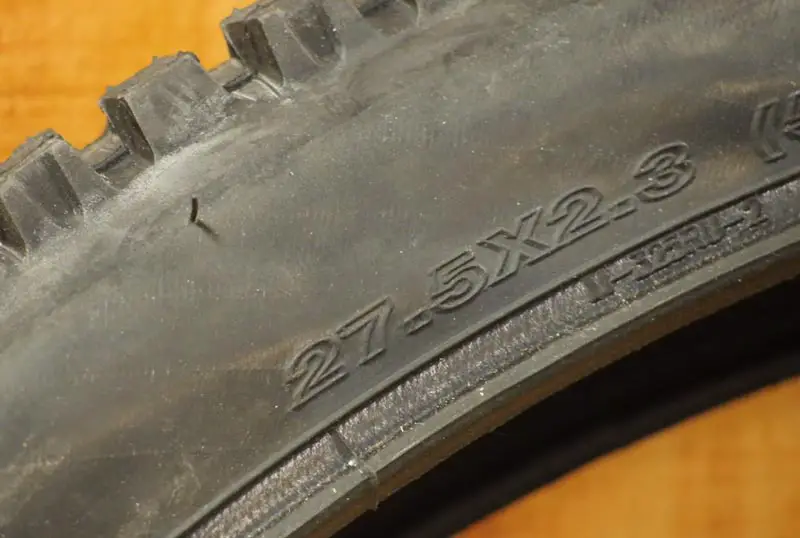
Check the ISO sizing, if available
If you read your bike tire sidewall, there’s a combination of numbers that have 5 digits in total – 2 at the front and 3 at the end, separated by a dash in between. That’s the ISO sizing, which stands for International Standardization Organization – a more accurate way to measure your bike.
ISO sizing is more direct because it tells you the exact millimeters of a bike in terms of diameter. For instance, if you have a 700 x 25C (or 700C x 25) bike tire, you might read something like “25-622”. So, what do these numbers mean?
In the given example, both these two numbers are measurements in millimeters. The number 25 stands for 25 mm (the width of the tire) while the 622 is the diameter of the bike tire. This is a more accurate way of telling you the precise measurement of the tire – apart from the common sizing.
On the other hand, if you have a bike that has 24 x 2.12 for its common sizing, the measurement in ISO standards could be 57-507, wherein it has a 57-mm width and 507-mm diameter. As you can see, it is a more uniform and exact measurement that you can rely on for getting a new bike tire.
The advantage to ISO sizing is for those who own much older bikes, non-standard bikes, or different rim sizes – these can have an effect on the overall diameter of your bike. If you’re in doubt, take note of the ISO sizing as well if you intend to buy a new bike tire for an old or less common model.
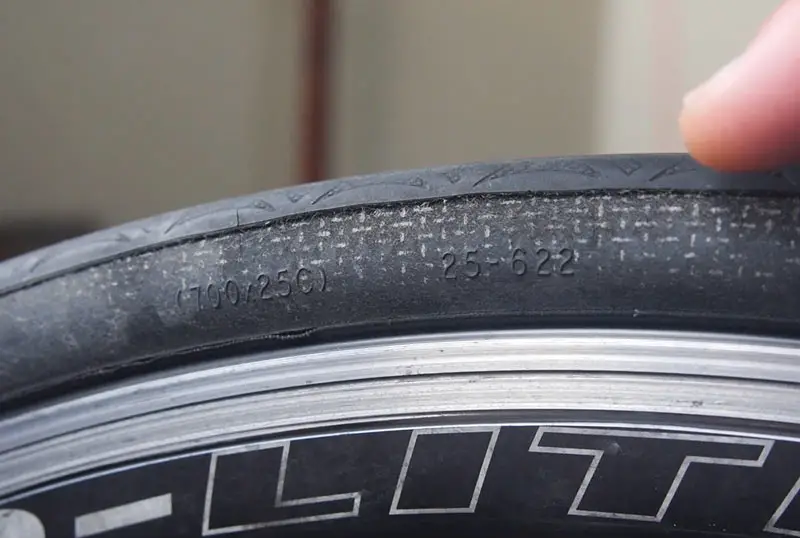
Know the tire capacity of your rim and frame
Some rims have clearances for various tire sizes – it should be indicated on the rim sidewall (or you can ask your local bike shop owner for more information). However, don’t go beyond the recommended bike tire sizes to avoid mishaps when you ride.
If you go with a much bigger bike tire without considering the rim or the frame of the bike, you will run into some hiccups. For instance, it could rub against the frame and might also not fit properly on the rim that you have.
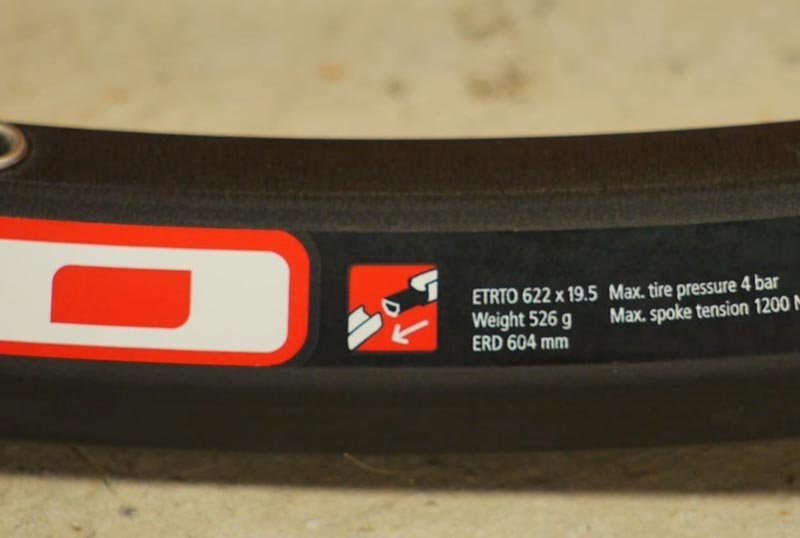
Q&A
Here are some frequently asked questions regarding reading bike tire sizes:
Yes, a wider rim will affect what tire size you will need to buy. Be sure to measure your rim as well – especially if you have an old bike or a less common model or size. As we mentioned above, some bikes have a different rim-to-tire ratio.
Yes, you can put a bigger bike tire, so long as the rim size is just right and properly fitting. Consider your frame size as well if you are replacing your bike tires. We also recommend bigger bike tires only for disc brake users to avoid misaligned rim brakes.
Yes, you don’t need to change your rooms if you want to change your tire size. As mentioned above, all you need to consider to upgrade your tire size is if your frame allows for a bigger tire. Try asking a bike shop for the appropriate tire size.
Yes, a 17-inch tire size will work just fine on a 15-inch rim – so long as your bike frame has sufficient clearance for it. If you have a set of rim brakes, however, keep in mind that it could put them out of alignment.
It depends on where you will use your bike. For off-road biking, we suggest bigger wheels because they will help you ride smoothly with their better rolling resistance. If you are more focused on speed, that’s where smaller wheels are more suitable due to the aerodynamics they offer.

